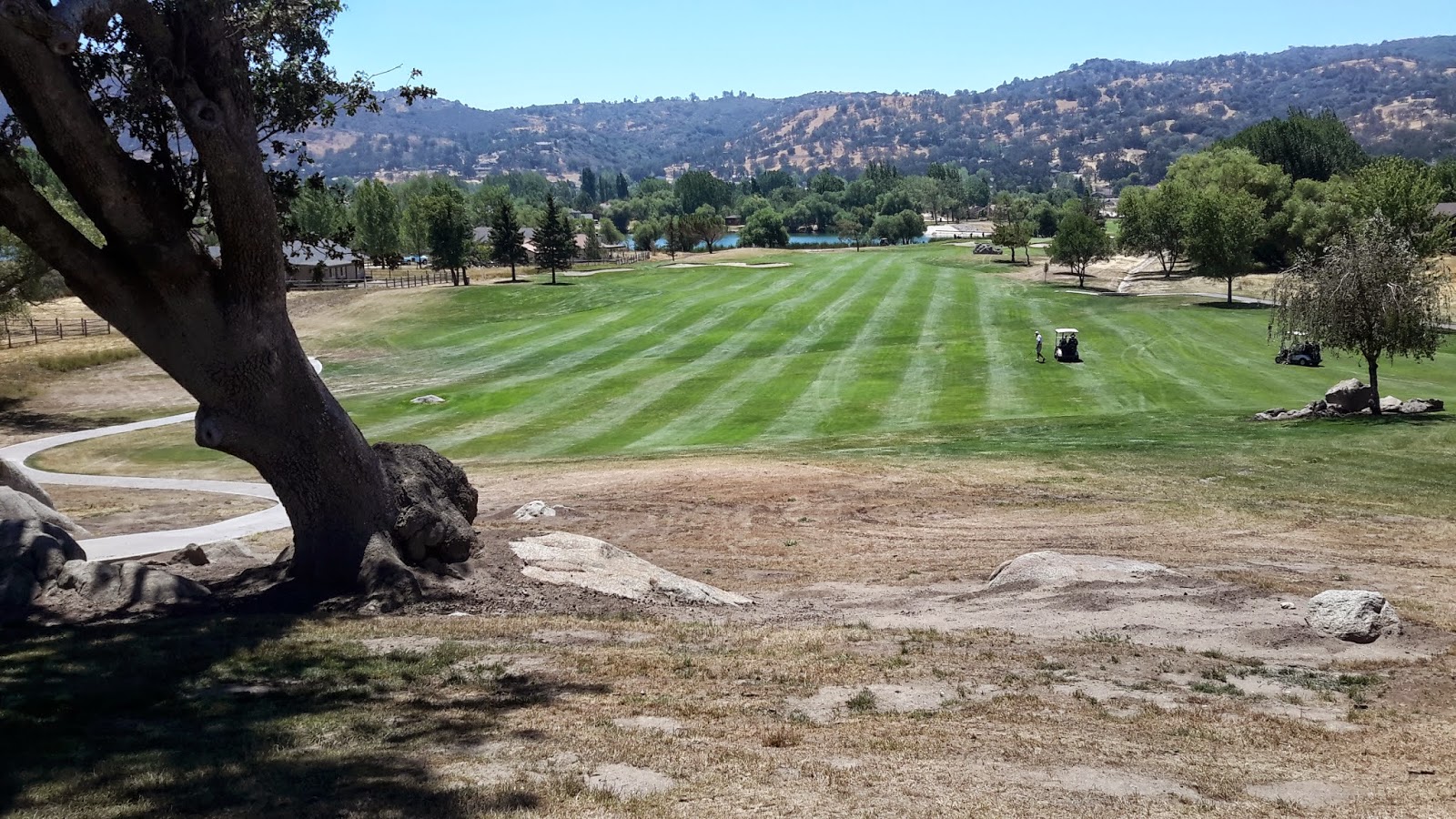Thursday, October 30, 2014
Sometimes We Get Choked Up
It isn’t often that we are surprised when we encounter
something on one of our properties. But, these encounters put pressure on
us as property managers… Onto the root of the problem… This Juniper
root was literally choking the irrigation line feeding the front entrance to
Silver Lakes in Helendale, California. A routine leak turned into a shake
your head, all choked up moment.
Saturday, October 25, 2014
The Value of Root-Pruning
When trees and turf compete, trees typically come out on top
(pardon the pun). Trees impede valuable sun light which is used by the
turf to make food – a process known as photosynthesis. Not only do trees
cast shadows on turf which limit sun exposure, tree roots compete with turf
roots for water and nutrients. In this picture, there is a clear defined
line between healthy and stressed turf. The marked interface between
happy and stressed turf is where the tree roots were severed with a trencher
during an irrigation project at Chicopee Country Club in Massachusetts.
So, who says root-pruning isn’t beneficial? The proof is in the picture…
Monday, October 20, 2014
Know your numbers
Strictly Business sponsored by Syngenta
Pick up some knowledge on capital expenditures in this crash course Q&A.
Helen M. Stone | October 2, 2014
Taking care of turf is tough enough without having to worry about any other green on the course. But knowing how to approach a budget helps superintendents get the most out of what they’ve got. We asked Steve Gano, vice president of operations at International Golf Maintenance in Champions Gate, Fla., to help clear up capital expenditures.
What’s a capital expenditure, exactly, and where would we see them on a course budget?
Capital expenditures are outlays for fixed assets – resources which have a long life. In our business a capital expenditure involves a purchase of a new fixed asset, a replacement of a fixed asset or a major overhaul which extends the useful life of a fixed asset. Fixed assets in a golf course maintenance setting include the land, maintenance equipment, the maintenance building, the irrigation system, and even the golf course features such as greens and bunkers.
Can you briefly explain capital expenditure evaluation?
Oftentimes in golf course maintenance, it is as simple as whether or not the cost to repair the equipment, considering downtime, exceeds the cost of replacement over a period of time. As an example, if a mower needs a new engine or hydraulic pump, the repair costs could exceed the equipment cost to a club over the period of a year. Another example pertains to an irrigation system. If an antiquated and unreliable irrigation system poses a risk for turf loss on greens, then at some point, the potential for lost revenue and replacement of the turf outweighs the cost of a new system.
As an alternate example, we’ve had capital expenditures created as a result of upgrading the experience at a course. A simplistic example is the purchase of a green’s roller due to the demand for quicker ball roll.
Can you give us a quick explanation of some of these terms?
Residual/salvage value: Salvage value is the market value of the fixed asset at the end of its useful life. It could be as simple as the value of the metal or the value of the independent parts of the machinery. Residual value: This refers to the amount that a leasing company believes a fleet is worth at the end of the lease term.
Tax considerations: A capital expenditure is spread over the useful life of the fixed asset, and the expense is deducted from the businesses income – resulting in less income tax.
Payback: This is the term in which a course recoups the investment in a fixed asset – return on the investment.
Can you discuss some of the decision making process when it comes to leasing vs purchasing?
For a golf course, it depends on the useful life of the machinery. Mowing equipment and utility vehicles which are used almost daily are oftentimes leased. Cultural equipment with a longer useful life, such as aerators, topdressers and vertical mowers are purchased more often. And, there are different tax considerations when deciding to lease or purchase.
The leasing company owns the equipment at the end of the lease. A superintendent should consider hour limits and residual values when leasing. And, a superintendent should consider the attractive monthly costs of a lease vs. a purchase.
Is there any other information regarding capital expenditures that would be important to a golf course superintendent?
There is a lot to consider when making a large capital investment. Not only should a superintendent consider the cost, the method to pay for it, but also, the service capability of the vendor and/or contractor.
Thursday, October 9, 2014
Drought Conditions in California
 |
| Brandon Haynes |
With the anticipation of the continuing California drought, IGM at Bear Valley Springs took proactive measures at the beginning of the season the ensure that there would be sufficient water to sustain the greens, tees and fairways. This included a wide variety of measures as well as modified programs and practices.
To spearhead these efforts, Brandon Haynes was given the additional responsibility of Water Wise Manager as we believe it is necessary to have a specific staff member in charge of preventing and scouting for water waste.
Results thus far have been terrific. IGM has reduced water use by over 35% for the months of July, August and September. Nearly a 8.5 million gallons savings. And despite the droughty conditions, players have been pleased with conditions.
Subscribe to:
Posts (Atom)



